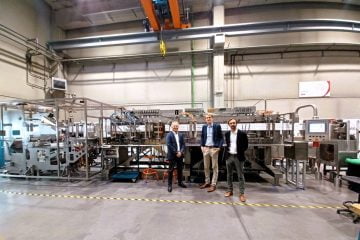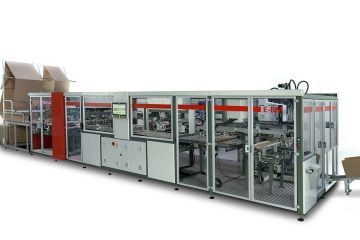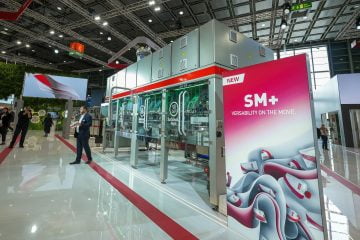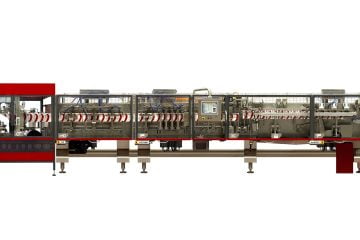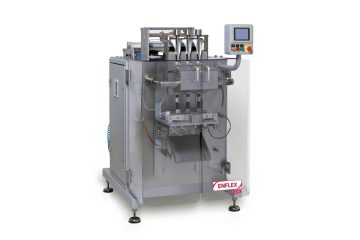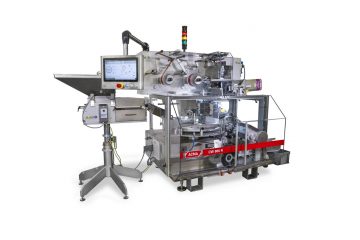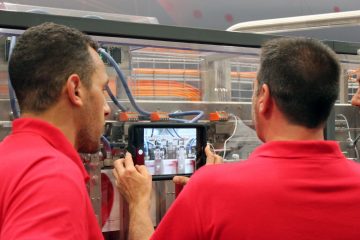Industrial research and innovation are supporting the shift to a more sustainable and human-centered European industry. The European Union set the path forward with Industry 5.0, emphasizing industry sustainability and the human dimension. We spoke with Roberto Lattarulo (ACMA Marketing Manager) to learn more about the company’s approach to topical subjects such as Greenmation.
Greenmation is the sustainable automation of ACMA

Industry 5.0 is a concept, a production method that formalizes what is already in the DNA of ACMA, a Coesia Group firm, by introducing the term Greenmation, which is a synthesis of the Group’s dedication to green automation. It started as a modern-day challenge to meet market demand for automation and sustainability.
“Our highlight is Greenmation, which includes sustainability, automation, and digitization,” says Roberto Lattarulo. “We solve market challenges by utilizing automation in a sustainable way; today’s end consumers demand reusable and recyclable packaging solutions. In addition to requesting our assistance, our customers must deal with workforce lack and rising production costs. It is certain that talk about sustainability does not only mean focusing on product packaging, but also on all of the details required for the complete industrialization system.”
Among the solutions shown by ACMA on the Coesia booth during Interpack is the CW 600, a packaging machine for flat-based chocolate pralines with smart robotic distribution whose management is directly integrated with OptiMate, Coesia’s human machine interface, which is present on the CW 600.
“We have named this solution “ACMA Smart Handling – Demo Solution,” a technology created for the automated handling of flat-based chocolate pralines using delta robots with single or multiple pick and place. Demo solution because it is a production line simulation to show what ACMA is able to manage inside a production plant with chocolates arriving randomly in the line: the products can be placed on the feeding belt in an oriented and in ordered ranks thanks to the delta robots. This is a solution highly environmentally friendly developed by ACMA’s R&D department and the Coesia engineering Center, using a Schneider Electric’s platform.”
The Material Gate for new materials
The Material Gate is an ideal testing instrument before putting the wrapping material into production.
(video: ACMA)
The ACMA-patented Material Gate system, which is a component of the Sustainability Lab, examines environmentally friendly packaging materials for items that are packaged in twist mode. The system was developed to assist primary packaging manufacturers as well as ACMA clients who want to implement green wrapping materials into production. It enables you to test wrappings quickly and easily without requiring machine downtime, which helps ACMA experts precisely determine the modifications that need to be made on the machinery for the use of new materials or possibly to design new upgrade kits.

“At Interpack, we presented the Material Gate in action. This enabled us to show the findings of experiments we conducted with paper-based materials manufactured directly by manufacturers with whom we collaborate, like SAPPI and SIT Group, for the first time. The test involved the double-bow packaging of spherical chocolates. We help our customers identify the most effective way to package their products with alternative options through the Material Gate, and we help wrapping manufacturers find the correct material to put on the market.” Lattarulo continues, “Our CW 800, a best seller for wrapping spherical chocolates with double twist, is an example of a concrete application of how the Material Gate is supporting us to make our machines work with all new generation materials.”

Materials are a constantly evolving world with many innovative and fascinating solutions, and the Material Gate is an ideal testing instrument before putting the wrapping material into production. The entire system is servo-motorized, which allows our experts a quick entry of different movement parameters of the pincers that perform the twist through a simple computer, rather than having to build new cams each time to be assembled and tested on the machine, which would become too laborious and expensive.
Sustainability of machines with revamping for a changing industry
“ACMA is dealing with the renewal of existing machines. It is unquestionably a more environmentally friendly activity than creating them from start. If one of our clients with an installed base of 100 machines wanted to utilize paper-based material and had to replace the entire line because he didn’t have the ability to upgrade them, everything would become incredibly complicated, expensive, and unsustainable,” Lattarulo notes. “Today, changes come quickly or are imposed from without; being unprepared could be a serious problem. It is a significant advantage to have machines that can be updated during their life cycle. To achieve this, we provide our clients the tools to handle changes, enabling them to modify the machines with a significant competitive advantage. We assist them in dealing with current and future developments in an efficient and practical manner.”




